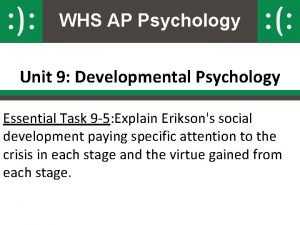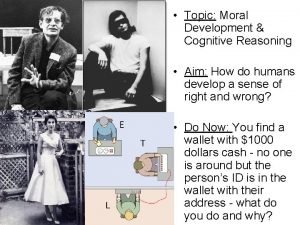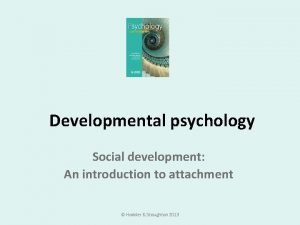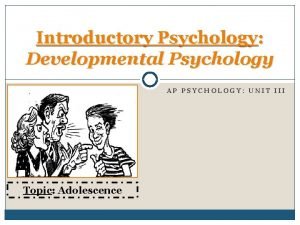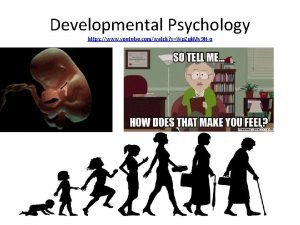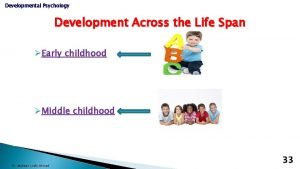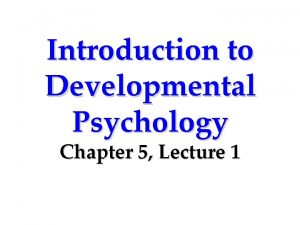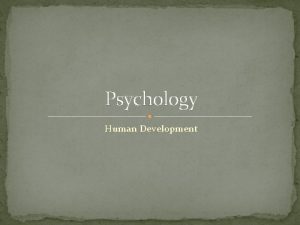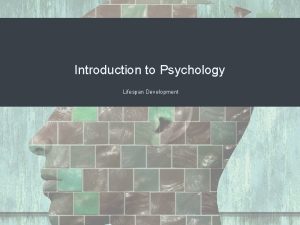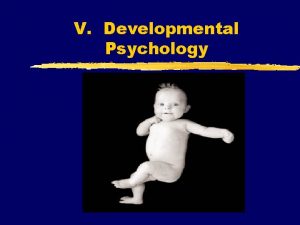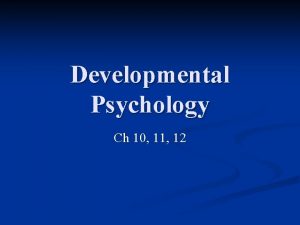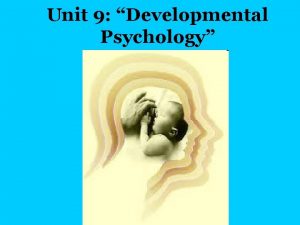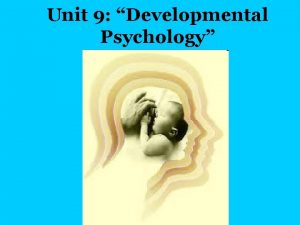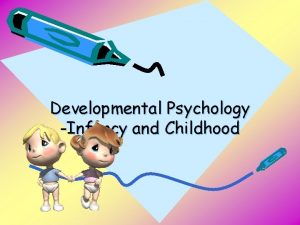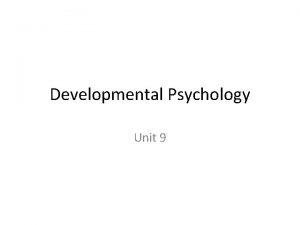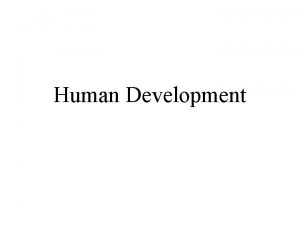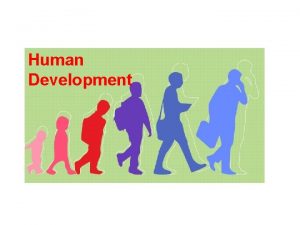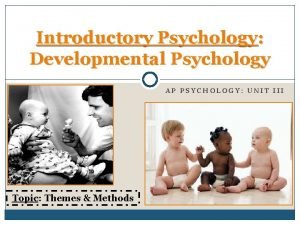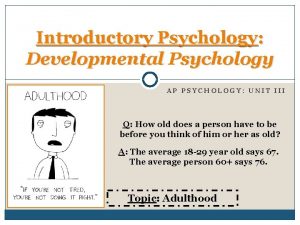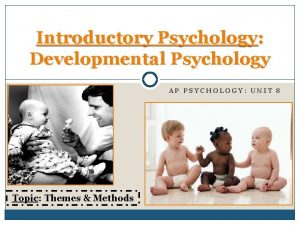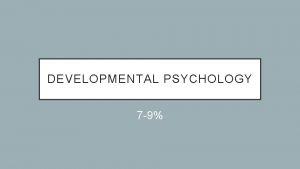Psychology Human Development Developmental Psychology How we change




















- Slides: 20

Psychology Human Development

Developmental Psychology � How we change over our life spans physically, mentally and emotionally. � Concerned with how and why different aspects of human functioning develop and change across the life span. � Physical development, such as changes in height and weight and the acquisition of motor skills � Cognitive development, such as changes in thought processes, memory, and language abilities � Personality and Social Development, such as changes in self concept and interpersonal relationships.

Developmental Psychology �Two central questions in Developmental Psychology are: �(1) How do biological factors(‘nature’) interact with environmental experiences (‘nurture’) to determine the course of development? �(2) Is development best understood as a continuous process of change or as a series of qualitatively distinct stages?

From Womb to Tomb �Periods of Development � Prenatal Period � Infancy � Early Childhood � Middle and Late Childhood � Adolescence � Early Adulthood � Middle Adulthood � Late Adulthood

From Womb to Tomb �Prenatal Development � Is concerned with the process in which a human embryo or fetus gestates during pregnancy, from fertilization until birth. � How is Prenatal Development related to Developmental Psychology? �Things or actions that had happened in the course of Prenatal Development, whether advantageous or disadvantageous, has certain effects or consequences to the whole Development process of a child.

From Womb to Tomb

From Womb to Tomb �Infancy � The developmental period from birth to 18 or 24 months. � A time of extreme dependency on adults. � Many psychological activities are just beginning.

From Womb to Tomb �Visual Cliff Experiment � The visual cliff apparatus was created by psychologists Eleanor J. Gibson and R. D. Walk at Cornell university to investigate depth perception in human and animal species.

From Womb to Tomb �Early Childhood � The developmental period extending from the end of infancy to about 5 to 6 years. � Often called the “preschool years” � Children learn to become more self-sufficient, develop school readiness skills and play with peers.

From Womb to Tomb �Middle and Late Childhood � The developmental period extending from about 6 to 11 years of age. � Approximately corresponds to the elementary school years. � Fundamental skills of reading, writing, and arithmetic are mastered. � Child is formally exposed to larger world and its culture.

From Womb to Tomb �Adolescence � The developmental period of transition from childhood to early adulthood – entered at 10 to 12 years, ending at 18 to 22 years. � Begins with rapid physical changes. � Pursuit of independence and identity are prominent. � Thought is now more logical, abstract, and idealistic.

From Womb to Tomb

From Womb to Tomb �Early adulthood � The developmental period beginning in the late teens or early twenties and lasting through the thirties. � A time of establishing personal and economic independence. � Also a time of career development. � Early adults select a mate, start a family , and rear children.

From Womb to Tomb �Middle Adulthood � The developmental period beginning round 40 years of age and extending to about 60. � A time of expanding personal and social involvement and responsibility. � Also a time of assisting the next generation in becoming competent. � Middle adults reach and maintain satisfaction in a career.

From Womb to Tomb �Late Adulthood � A period beginning in the sixties or seventies and lasting until death. � A time of adjustment to decreasing strength and health. � Also a time of life review, retirement, and new social roles.

From Womb to Tomb �Death. . .

From Womb to Tomb

Stages of Development �In a Developmental Psychologist’s Perspective: � “The concept of stages implies that behaviours at a given stage are organized around a dominant theme or a coherent set of characteristics, behaviours at one stage are quantitatively different from behaviours at earlier or later stages, and all children go through the same stages in the same order. ”

Motor Development

Lawrence Kohlberg’s Level of Moral Judgement Theory
 Unit 9 developmental psychology
Unit 9 developmental psychology Lawrence kohlberg developmental psychology
Lawrence kohlberg developmental psychology Research methods in developmental psychology
Research methods in developmental psychology History of developmental ideas in psychology
History of developmental ideas in psychology John bowlby's attachment theory
John bowlby's attachment theory Adolescence ap psychology
Adolescence ap psychology Devonte is a graduate student in developmental psychology
Devonte is a graduate student in developmental psychology Authoritariam
Authoritariam Psychology bs ucf
Psychology bs ucf Youtube
Youtube Developmental psychology
Developmental psychology Chapter 5 developmental psychology
Chapter 5 developmental psychology Chapter 8 human needs and human development
Chapter 8 human needs and human development Chapter 8 human needs and human development
Chapter 8 human needs and human development Human development index definition ap human geography
Human development index definition ap human geography Painting a wall chemical or physical change
Painting a wall chemical or physical change Physical changes
Physical changes Absolute change and relative change formula
Absolute change and relative change formula What is integer number
What is integer number Difference between physical change and chemical change
Difference between physical change and chemical change A change in supply vs a change in quantity supplied
A change in supply vs a change in quantity supplied
